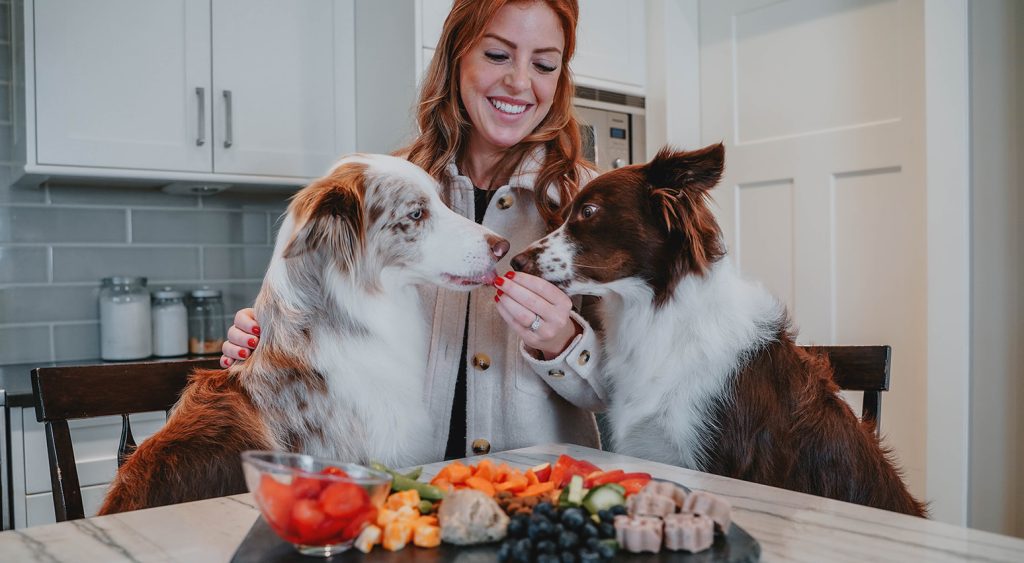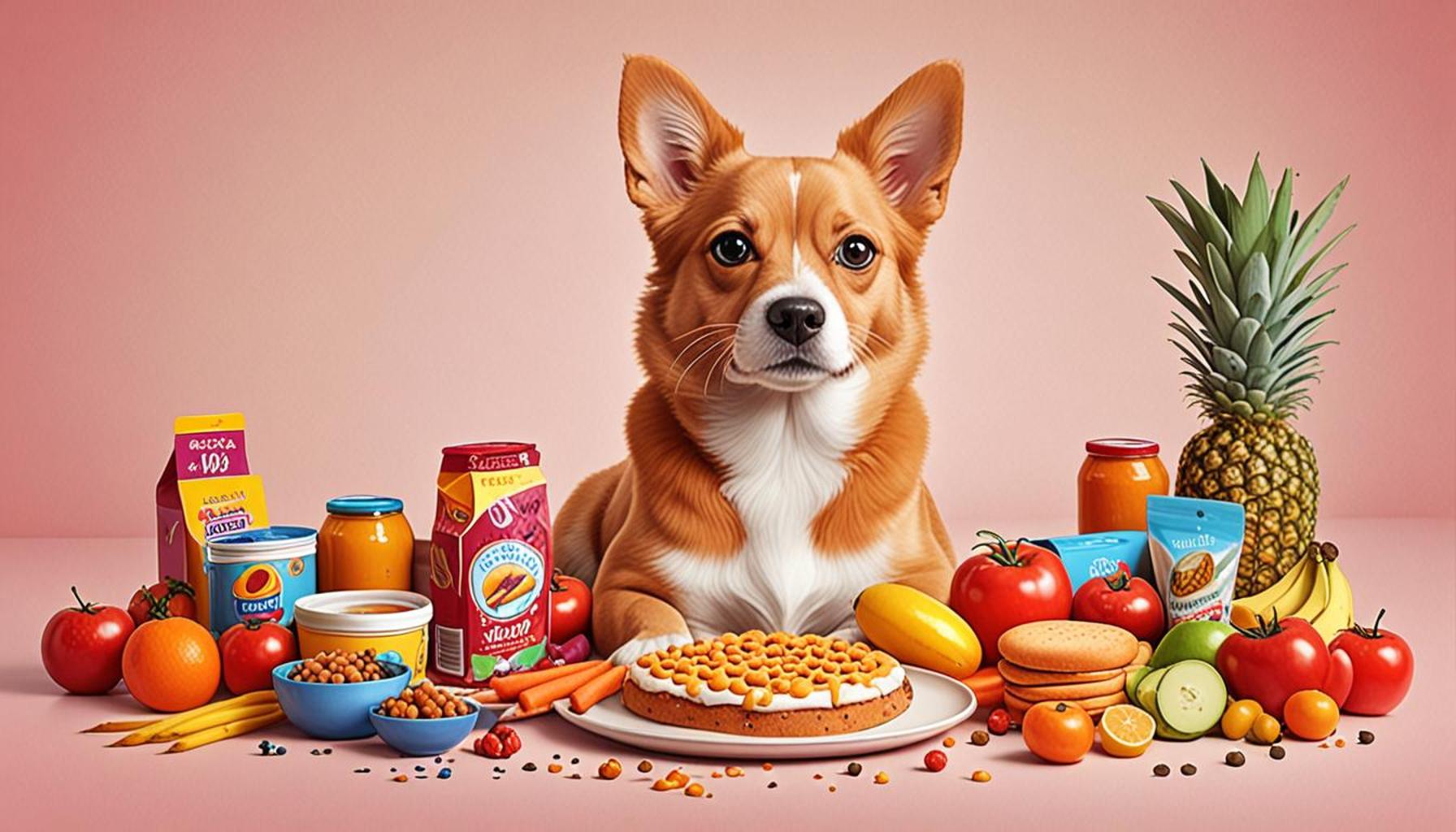Safe Weight Loss Tips for Overweight Pets Effective Pet Slimming Guide

Understanding Your Pet’s Weight Loss Journey
Obesity in pets is increasingly common, with nearly 60% of dogs and 56% of cats in the United States classified as overweight or obese. This alarming statistic reveals the urgent need for effective weight loss strategies that are both safe and sustainable. Just like humans, pets require a balanced approach to shedding those extra pounds. The causes of pet obesity often stem from factors like overfeeding, lack of exercise, and genetics. Owners may mistakenly believe that feeding treats or table scraps is harmless, but this can contribute significantly to excess weight gain.
Importance of Safe Weight Loss
Before embarking on a weight loss program for your furry friend, ensuring their safety is paramount. Rapid weight loss can lead to health complications, such as liver disease, gastrointestinal issues, and even muscle loss. Therefore, it is essential to adopt a gradual and thoughtful strategy that prioritizes your pet’s well-being.
- Consult with a veterinarian before starting any diet plan: A vet can assess your pet’s health and recommend appropriate dietary changes.
- Monitor your pet’s weight regularly: Keeping a log of their weight, ideally bi-weekly, can help track their progress and make necessary adjustments.
- Incorporate regular exercise into their daily routine: Activities like walks, fetch, or agility training can increase your pet’s physical activity while also providing mental stimulation.
Components of an Effective Slimming Guide
To facilitate a successful weight loss journey, consider the following essential tips:
- Balanced Diet: Provide high-quality, nutrient-dense food, focusing on meals tailored to weight management. Look for food containing high protein and low filler ingredients for maximum nutrition.
- Portion Control: Measure servings to avoid overfeeding. Utilizing a kitchen scale or measuring cups helps ensure your pet gets the correct portions according to their ideal weight.
- Engaging Activities: Use play and exercise to boost their metabolism. Interactive toys, puzzles, or simply playing fetch can encourage activity while keeping your pet engaged and happy.
By taking a holistic approach, you can help your pet lose weight safely, improve their overall health, and ensure they lead a longer, happier life. It is essential to remember that weight loss should be a gradual process, aiming for about 1-2% of their body weight per week. This sustainable rate of loss significantly reduces health risks and increases the likelihood of maintaining weight loss in the long term.
In addition to following a slimming guide, consider creating a support network with other pet owners. Sharing successes, challenges, and tips can provide motivation and accountability. By embracing healthy lifestyle changes for both you and your pet, you can create an environment that fosters lasting health and wellness.

Let’s dig deeper into these safe weight loss tips to create an effective slimming guide for your beloved companion, thus paving the way for a vibrant and joyful life together.
SEE ALSO: Click here to read another article
Essential Strategies for Helping Overweight Pets
As pet owners, we cherish the moments spent with our furry companions, but it can be distressing when those moments are overshadowed by concerns about their weight. Thus, implementing safe weight loss tips is crucial to ensure our pets remain fit and healthy. Many owners may not realize that common misconceptions about nutrition and food portions can lead to unintentional weight gain. With a staggering number of pets suffering from obesity, integrating effective strategies can make all the difference in your pet’s life.
Understanding Pet Nutrition
The first step in a successful weight loss journey is understanding what goes into your pet’s diet. Just as in humans, not all calories are created equal for pets. Prioritize high-quality pet food that contains the right balance of nutrients while being lower in calories. Look for formulations designated for weight management, which typically decrease fat content without sacrificing overall nutritional value. Foods high in fiber are particularly useful, as they promote satiety without adding excessive calories.
- Read Ingredient Labels: Check for named protein sources, such as chicken or lamb, and avoid fillers like corn and soy.
- Beware of Treats: Many commercial treats are high in calories and fat. Opt for low-calorie options or limit treats to fruits and vegetables like carrots and green beans.
- Consider Homemade Meals: Consulting with a veterinarian to create a balanced, homemade meal plan can be a safe alternative to processed pet food.
Regular and Engaging Physical Activity
Another integral component of a pet’s weight loss regimen is ensuring they are physically active. Exercise does not have to be boring or strenuous; it can also be an opportunity for fun bonding moments. Regular daily exercise can significantly enhance your pet’s chances of shedding unnecessary pounds while improving their overall health and mood.
- Establish a Routine: Aim for at least 30 minutes of aerobic activity each day. Structured walks or play can do wonders for weight management.
- Explore Interactive Play: Invest in fetch toys or laser pointers to spark their interest and motivate them to move.
- Socialize with Other Pets: Arrange playdates with other dogs or cats, allowing your pet to play and exercise in a social setting, which can be highly stimulating.
By focusing on these vital aspects of your pet’s lifestyle—nutrition and exercise—you can create an effective slimming guide tailored to their needs. Remember, weight loss should be a gradual process—aim for a gradual reduction of 1-2% of their total body weight per week. This goal not only minimizes health risks but also promotes longevity, ensuring your pet enjoys a longer, happier life.
In the journey to better health for your overweight pet, knowledgeable commitment from you will be key. Embracing these safe weight loss tips will help foster a more active and lively life for your beloved companion. Stay tuned as we delve deeper into additional strategies that will set you and your furry friend on the right path to success!
| Category | Details |
|---|---|
| Nutrition Management | Providing balanced and portion-controlled diets is crucial. Overweight pets require specific food tailored to support weight loss without compromising on nutrients. |
| Regular Exercise | Incorporating daily physical activities, such as walking and playtime, enhances weight loss. Engaging exercises are vital for burning calories and improving overall health. |
| Vet Consultation | A professional vet’s guidance is essential in developing a safe and effective weight loss plan tailored to the needs of your pet, ensuring healthy progress. |
| Lifestyle Adjustments | Adopting consistent feeding schedules and mindful treat giving habits can dramatically influence your pet’s weight loss journey in a positive way. |
The above table presents key aspects of safe weight loss strategies for overweight pets, focusing on aspects like nutrition management, regular exercise, and the importance of veterinary consultation. Each area plays a pivotal role in shaping effective pet slimming practices, ensuring your furry friend leads a healthier, happier life. Understanding these categories can motivate pet owners to dive deeper into effective weight loss methods, customizing their approach to meet their specific pet’s needs.
SEE ALSO: Click here to read another article
Monitoring Progress and Making Adjustments
As you embark on your pet’s weight loss journey, it is essential to regularly monitor their progress. Just like in human weight loss plans, consistency and evaluation are paramount. Keeping track of your pet’s weight and body condition score (BCS) can help you identify whether your strategies are working effectively.
Regular Weight Checks
Weigh your pet on a weekly basis, and note the changes over time. Using a consistent method, whether at home or a veterinarian’s office, will provide you with useful data. It is advisable to record these weights in a journal or an app designed for pet health management. This not only helps you chart their progress but also encourages accountability. If you find that your pet is not losing weight as expected, or worse, gaining weight, you may need to revisit your weight loss plan.
- Adjust Portion Sizes: If there is no visible progress after a few weeks, consider reducing their daily food portions further. Consult with your veterinarian before making significant changes.
- Evaluate Activity Levels: Constantly assess if your pet is getting enough physical activity. Consider increasing the duration or intensity of their exercise—such as brisk walks, swim sessions, or supervised playdates—if they appear to be bored or unmotivated.
- Rework Treat Choices: If your pet receives several treats throughout the day, assess the total calorie intake. Even “low-calorie” treats can add up quickly if offered in large quantities.
Incorporating Mental Stimulation
Weight loss isn’t solely about cutting calories and increasing physical activity; you should also consider mental stimulation. An alert and engaged pet is more likely to participate in activities, helping them expend energy and stay active. Incorporate puzzle toys, which can not only help with their mental well-being but also distract them from begging for food or treats all day. This enhances their overall quality of life, encouraging playfulness during exercise.
- Training Sessions: Short training sessions can be an excellent way to stimulate your pet mentally while promoting focused physical activity. Teach new tricks or reinforce basic commands, rewarding small victories with praise instead of treats.
- Interactive Toys: Invest in toys that require your pet to solve puzzles to access hidden treats, which can encourage them to move around and engage their brains.
- Obstacle Courses: Create a mini obstacle course in your living room or backyard, using everyday items. This provides a fun way to exercise while keeping your pet mentally sharp.
Consulting the Professionals
As you journey through your pet’s weight loss process, don’t underestimate the value of professional help. Regular check-ins with your veterinarian can provide vital insights and ensure your approach is both safe and effective. They can help monitor health status, adjust diet plans, and identify any possible underlying health issues that could affect weight loss.
- Behavioral Specialists: For pets with compulsive eating behaviors, consulting a pet behavioral specialist can provide you with techniques and strategies to curb overeating.
- Nutritionists: A veterinary nutritionist can help create a tailored feeding regimen that aligns with your pet’s unique health needs, age, and lifestyle.
- Support Groups: Many communities and online forums offer pet support groups focusing on weight loss. Engaging with other pet owners can provide encouragement and practical advice, helping you stay motivated.
Taking a well-rounded approach through continuous monitoring, mental stimulation, and professional guidance empowers you to make informed decisions for your overweight pet. This holistic strategy is essential not just for the sake of looks but for enhancing your pet’s overall health and longevity. With persistent effort and attention, your furry friend can successfully transition to a healthier lifestyle that promotes vitality and happiness.
CHECK OUT: Click here to explore more
Conclusion
In summary, embarking on a weight loss journey for your overweight pet is a commendable endeavor that demands careful planning, patience, and dedication. Following safe weight loss tips for overweight pets requires a multifaceted approach that includes monitoring progress, modifying diet, and increasing physical activity, all while ensuring your furry friend’s mental and emotional well-being. Remember that each pet is unique, and a one-size-fits-all strategy is unlikely to yield successful results. Therefore, consider customizing your efforts based on your pet’s specific needs and preferences.
Consulting professionals such as veterinarians, nutritionists, and behavioral specialists can provide tailored insights into your pet’s condition, helping you formulate an effective and sustainable weight management plan. Regular weight checks, dietary adjustments, and incorporating stimulating activities can promote a healthier lifestyle that improves your pet’s overall happiness and longevity.
Whether it’s through exploring engaging toys, participating in training exercises, or finding activities that spark joy, the key to safe weight loss lies in a combination of nourishing the body and nurturing the mind. With the right guidance, support, and commitment, you can transform your pet’s weight loss journey into an empowering experience that enhances not just their physical health, but also the bond you share.
So take the first step today: embrace the journey, equip yourself with knowledge, and watch your beloved companion thrive in their quest for wellness!


